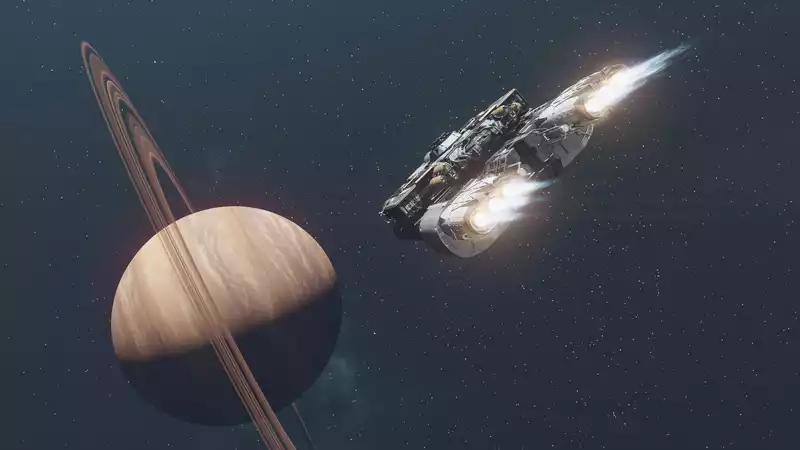Starfield is big. Really big; there are over a thousand planets. But the illusion of its size really disappears when the game repurposes certain prefabs. You have to go through the exact same space base over and over before you feel like you're on The Truman Show.
As PC Gamer's Fraser Brown pointed out a while back: there's not much to see in Starfield other than the bustling, quest-filled hub. It feels small thanks to fast travel, but even after hours of wandering around, it's rare to find anything else that you haven't seen many times before. Another dead moon. Another nickel deposit. Another pirate base.
I enjoyed my Starfield excursion in an MMO-style checklist fugue state, but honestly, that's not the sense of "cosmic wonder" that Bethesda is trying to sell. Interestingly, former Bethesda developer and "Skyrim" lead designer Bruce Nesmith (who was present at the start of "Starfield" development but left Bethesda shortly after) suggests that a more condensed galaxy was on the table, if only for a moment.
"There was a lot of discussion about the scope of the game: ...... At one point I said, 'This game must be better if we limit it to about 20 solar systems,'" Nesmith said in an interview with MinnMax.
However, the team saw an opportunity to reduce the workload to an even larger scale by utilizing procedural generation." If you build one solar system, you can build 100, and the workload doesn't increase that much." He continued, citing the types of planets players would like to explore, "Just by building their own solar system and doing all the different things they have to do for it, they've done 90% of the rest of the work." He remarked.
In some ways that is true, but whether it will actually happen or not remains to be seen. Part of the fun of the universe is how strange the planets can be. For example, the planet HD 189733b has winds that move faster than the speed of sound. There, molten glass rains horizontally. Gliese 436b is covered in clouds of hydrogen; HD 80606b's atmosphere basically explodes every 111 days. While something like this would make for a great set piece or unique encounter in a smaller game, "Starfield" traded wonder for scope.
Nesmith said the team decided: "People love our big games and they love open areas to explore. But even Nesmith admits that most of the core of the game is anchored in dozens of systems. Todd pulled the figure of 100 star systems out of thin air, but the further we went, the more it became clear that all of the core activity would take place in these dozens of systems in the settled star system region, with the rest being open space."[13
Nesmith reasoned that beyond a certain point, Starfield had to make certain trade-offs." If you want to build your own spaceship (which you didn't have to), you have to make difficult choices between completing quests and adding more plants and animals to your collection. I don't think the exploratory nature of the project came across well.
That is true to an extent. Game development is not magic. At best, it is a knobby Jenga tower of design decisions, riddled with necessary shortcuts. Compromises have to be made somewhere. Every game studio on the planet knows the choices they are making. But you have to make hard choices.
Still, one can't help but wonder if the game would have been better if Nesmith's ideas had been allowed to percolate. It makes me think about "Outer Wilds". In that game, the solar system and planets are proportionally small, but it is a wonderful representation of the wonder of space exploration, including the extreme weather conditions mentioned earlier. But if the "Outer Wilds" could make outer space feel huge on just a few planets, the "Starfield" could have done the same.
.

Comments